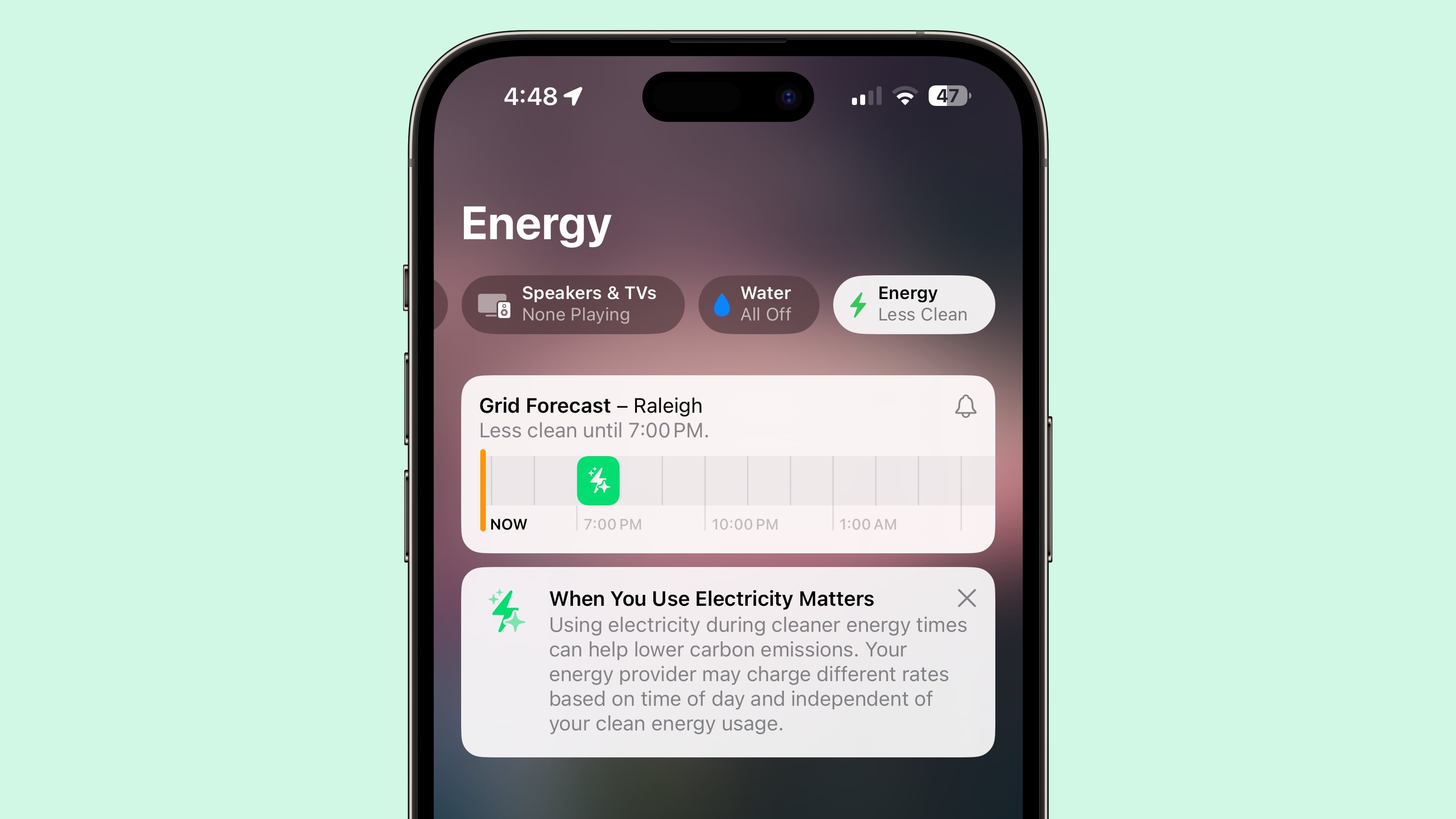With the iOS 17 release candidate that came out yesterday, Apple added a new "Grid Forecast" section to the Home app. The feature is designed to use your location to tell you when "clean" energy is available to use, so you can be mindful of when you're using energy.

According to Apple, the energy sources that are used to power a home can change throughout the day. When the forecast reads "Cleaner," it means that the available energy sources may have lower carbon emissions. When it reads "Less Clean," available energy sources that are powering the grid may emit more carbon into the atmosphere.
Apple suggests that users can take advantage of this forecast to decide when to use electricity in situations where energy usage can be timed. Choosing to run the washing machine, the dryer, or the dishwasher during the "Cleaner" time will cut down on carbon emissions.
The Grid Forecast is based on each person's location, and Apple says that it is relative to the energy sources available on the grid in a particular place. According to Apple, even in areas with limited renewable generation, relatively cleaner energy may still be available. Apple does not provide information on where its energy information is sourced.
You can get to the Grid Forecast in iOS 17 by opening up the Home app and tapping on the "Energy" option at the end of the top navigation bar. You will see the current energy status and a time when it will shift. A Grid Forecast icon is also available at the top right of the Home app.
Grid Forecast is not a metric that is available in Automations, so it cannot be used to activate smart home devices at select times. The Grid Forecast is available on all Apple devices in the Home app, including iPhone, iPad, Apple Watch, and Mac.
This article, "iOS 17 Includes 'Grid Forecast' Feature to Let You Know When 'Cleaner' Energy is Available" first appeared on MacRumors.com
Discuss this article in our forums
Source: TechRadar

According to Apple, the energy sources that are used to power a home can change throughout the day. When the forecast reads "Cleaner," it means that the available energy sources may have lower carbon emissions. When it reads "Less Clean," available energy sources that are powering the grid may emit more carbon into the atmosphere.
Apple suggests that users can take advantage of this forecast to decide when to use electricity in situations where energy usage can be timed. Choosing to run the washing machine, the dryer, or the dishwasher during the "Cleaner" time will cut down on carbon emissions.
The Grid Forecast is based on each person's location, and Apple says that it is relative to the energy sources available on the grid in a particular place. According to Apple, even in areas with limited renewable generation, relatively cleaner energy may still be available. Apple does not provide information on where its energy information is sourced.
You can get to the Grid Forecast in iOS 17 by opening up the Home app and tapping on the "Energy" option at the end of the top navigation bar. You will see the current energy status and a time when it will shift. A Grid Forecast icon is also available at the top right of the Home app.
Grid Forecast is not a metric that is available in Automations, so it cannot be used to activate smart home devices at select times. The Grid Forecast is available on all Apple devices in the Home app, including iPhone, iPad, Apple Watch, and Mac.
This article, "iOS 17 Includes 'Grid Forecast' Feature to Let You Know When 'Cleaner' Energy is Available" first appeared on MacRumors.com
Discuss this article in our forums
Source: TechRadar